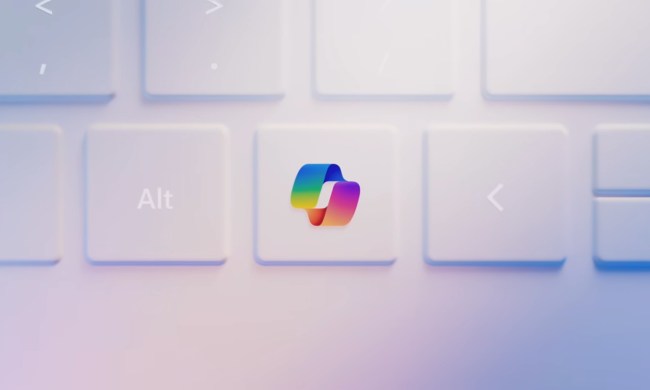Microsoft’s work on a new pressure-sensing on-screen keyboard virtual keyboard could make it easier to type on a new crop of laptops emerging this year with dual screens. Intel is working with partners Asus and Lenovo to bring its Tiger Rapids concept prototype to consumers — it’s essentially a laptop that replaces the bottom keyboard portion with a secondary touchscreen. While the second screen adds more versatility for users to view, create, and interact with content, typing on a glass surface will be a challenge, and now Microsoft has a solution.
According to a patent application that was filed on January 9, 2017, with the United States Patent and Trademark Office and published just this Thursday, Microsoft wants to add support for pressure and gestures to the virtual keyboard to make typing faster.
“Virtual keys are often smaller and tightly packed and the mechanics of typing may differ from the mechanics of typing on a physical keyboard,” Microsoft said of the challenges of typing on glass. “Due to limited space, some key may be overlooked with multiple permutations of a character, multiple user steps or interactions may be needed to specify a permutation of a symbol associated with a virtual key. Generally virtual keyboards are less efficient to use due to obvious differences between physical keyboards and virtual keyboards.”

So, in addition to being able to recognize that a key has been activated by touch, Microsoft’s innovation also calls for software to recognize if the pressure is hard enough to activate additional commands. For example, touch the key lightly and swipe to the right, and the keyboard will recognize that you’re typing a lowercase letter. Press down hard and swipe firmly to the left, and you can trigger a capitalized word. On virtual keyboards where multiple symbols are packed onto a single key, the swiping gestures can make it easier to use symbols and characters without requiring users to activate the function or alternate character key.
“By using pressure measures for symbol selection, it is possible for a touch input to control which symbol permutation (of a virtual key selected by the touch input) is selected without having to display additional graphics or user interface elements and without requiring possibly slow and elaborate interactions by the user to specify permutations of a virtual key’s symbol,” Microsoft said. Additionally, you can also map multiple key combinations using pressure sensitivity. Microsoft details that for the copy-and-paste functions, you can map it to the “c” key for cut and “p” key for paste. “When one of those virtual keys is selected with an appropriate pressure feature, the function mapped to the virtual key is invoked,” the patent application detailed.
For certain applications, the keyboard can also display additional graphics when a key is pressed to call on additional symbols or functions, Microsoft said, such as a radial menu or a pop-up palette of user-selectable permutation symbols.
While these innovations may be new to the desktop — and the best laptops and tablets — they already exist in some similar form today on mobile devices. SwiftKey — which Microsoft acquired — creates a software keyboard for mobile platforms that makes it easy to enter alternate keys and symbols on a touchscreen by using a more primitive pressure-sensitive approach similar to the one Microsoft described in its patent filing. Microsoft is also bringing SwiftKey‘s swiping keyboard to Windows 10.


